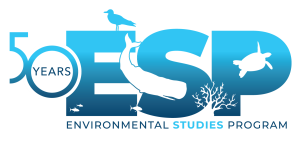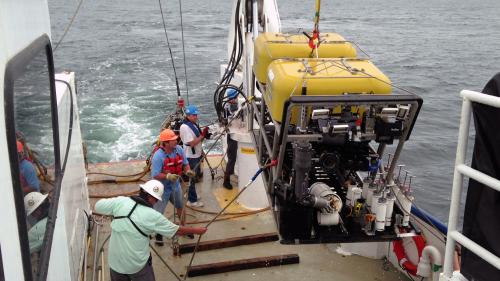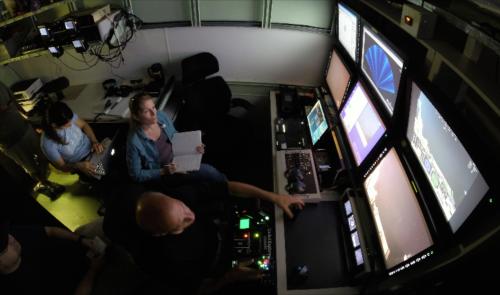We are committed to protecting and conserving our precious ocean for future generations. However, it is difficult to protect what we do not know. Although the ocean covers about 70% of the planet’s surface, it is still one of the least understood and most vulnerable habitats.
Today, over 80% of the global ocean (and 50% of the U.S. Ocean) is still unmapped, with even more unexplored.
One of the biggest challenges of ocean exploration is the intense pressures in the deep ocean. In addition, zero visibility and extreme cold temperatures make it difficult to explore the vast ocean.
Despite these obstacles, the Bureau of Ocean Energy Management (BOEM) is exploring the uncharted ocean off the coast of the United States, thanks to improving technology and the combined efforts of partner federal agencies—such as National Oceanic and Atmospheric Administration (NOAA) and many others.
By using human-occupied vehicles (HOVs), remotely operated vehicles (ROVs), and autonomous underwater vehicles (AUVs), scientists can now boldly explore where no one has explored before.
HOVs allow explorers to reach a depth of 4,500 meters. To explore deeper depths, explorers rely on ROVs and AUVs. ROVs are tethered to a surface ship with a communication cable and operated by someone in real time from the ship, whereas AUVs are pre-programmed to follow a course on its own without real-time interaction with a human operator.
Unlike aerial drones, which can be remotely controlled because command signals can travel through air, ROVs used in ocean exploration can only receive commands through the tethered cable for real-time control. While AUVs can explore the ocean without being tethered, they cannot be controlled by human operators in real-time, which can limit their capability when unexpected issues come up.
The scientific information collected from exploration using current technology has helped inform BOEM’s environmental reviews of and decisions on offshore energy development.
Take, for example, the Deep Sea Exploration and Research of Coral/Canyon/Seep Habitats (Deep SEARCH) project. This important project, sponsored by the National Oceanographic Partnership Program, is a multi-year collaborative between BOEM, the U.S. Geological Survey (USGS), and NOAA.
The Deep SEARCH research team has found that the ocean off the U.S. southeastern coast contains diverse habitats such as submarine canyons, cold-water coral mounds and gardens, methane seeps, and soft sediments. Results to date have revealed important differences in deep water habitat types and animal species between the Gulf of America and the Atlantic Ocean. Researchers also discovered that each submarine canyon has unique assemblages of deep-sea organisms and environmental conditions.
ROVs and AUVs were also used in another multi-year interagency exploration project on the Blake Plateau, located off the coast of North Carolina, South Carolina, Georgia, and Florida.
Fifty years ago, a company conducted pilot testing of deep-sea mining technology at a Blake Plateau site, which contains polymetallic nodules on the seafloor.
Scientists from BOEM, NOAA, and the USGS worked together to use an ROV and AUV to collect high resolution mapping and imagery that provided a very detailed and complete picture of the site, with sufficient detail to determine if signs of disturbance can still be observed many decades after the activities occurred.
The data collected can help provide insights into if and how these types of seafloor environments recover from such mining-related activities. The results can help BOEM develop objective environmental and ecological baselines that can inform reviews, future decisions, and mitigation measures related to deep-sea mining in other areas.
By using modern technology, BOEM can explore and collect data in uncharted oceans. This critical research will improve BOEM’s understanding of the interconnectedness of the underwater habitat and ensure that the Bureau has the best available science to help inform its offshore energy and marine mineral policy decisions.
This story is part of the “Unleashing the Science” series, showcasing how bureaus within the Department of the Interior produce and apply science to ensure responsible management decisions for our planet now and for the future.
--BOEM--
The Department of the Interior’s Bureau of Ocean Energy Management (BOEM) manages development of U.S. Outer Continental Shelf (OCS) energy, mineral, and geological resources in an environmentally and economically responsible way.




